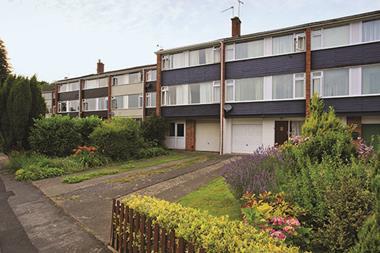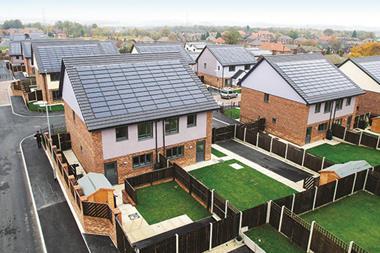The last Labour London mayor, Ken Livingstone, had an ambivalent attitude to commercial property. On the face of it he was a supporter of key projects, such as The Shard. But did he ever really like developers?

The fact was that Livingstone only ever had negative planning powers: he could call schemes in and threaten them, or indeed issue planning refusals. But he had no power to grant permissions over the heads of local planning authorities.
Everything changes and these days the London mayor, Sadiq Khan, has both positive and negative planning powers and, moreover, can exercise compulsory purchase orders. Given that he also has political control over both land owned by legacy corporations and the activities of the London element of the Homes and Communities Agency, you might wonder why there isn’t more about housing delivery in the recently published London Plan. What basis, especially given the track record of the previous two mayors, is there for thinking that the private sector will deliver sufficient housing to meet past, present and future demand?
“For anyone who lived through the decades where the phrase ‘office development’ was a red rag to a Labour bull, the transformation in attitude is truly remarkable”
The clue may lie in the Greater London Authority legislation requiring the mayor to have, or produce, a “spatial development strategy”. That is not quite the same thing as a housing delivery strategy.
The new draft London Plan is a sound document, excellent on design and transport and long-term in its general outlook (it is supposed to last until 2041). It also makes all the right noises about housing, sets out appropriate targets and envisages a review of the plan by 2029, which is probably just as well. Does anyone think targets will be met in anything like the near future?
Find out more: What does the draft London Plan mean for the industry?
Unfortunately, the lust for the magic 50% affordable element in private sector developments is having a malign effect on many schemes across London, which are being delayed, put on hold or even dropped because the sums simply do not add up. As the old question has it: “Would you rather have 20% of something or 100% of nothing?”
There is a conspiracy of silence pervading this area because no one wants to make political enemies by shouting about the waste of time and money and the slowdown in actual delivery of much-needed new units.

Yet the mayor is certainly not anti-property. For anyone who lived through the decades where the phrase ‘office development’ was a red rag to a Labour bull, the transformation in attitude, as demonstrated in the new London Plan, is truly remarkable. The mayor loves offices: he wants them in the opportunity areas; he wants them in town centres; he wants them in the ‘central activities zone’; and he wants them in what previously might have been thought of as residential- and retail-led character areas like Covent Garden and Soho. That’s good lobbying from somebody.
Like many planning documents, there is an undertone that somehow this critical employment property type needs protection from malign influences – in this case, people who want to convert redundant offices to apartments. You might have thought this would be a matter for celebration, given the housing shortage. Thoughtful planners quietly acknowledge that as long as a massive imbalance of offices and housing exists, there will be market forces trying to restore the balance.
If you think as-of-right conversions are a bad idea, the answer is to build more housing by doing some positive planning and delivery, rather than trying to stifle conversions through negative development control.
A good question, which the mayor might take advice on, is why, given that office developers operate in the same planning, building regulation and financial regime as housebuilders, do we have a shortage of housing but no shortage of offices?
Paul Finch is programme director of the World Architecture Festival
































No comments yet